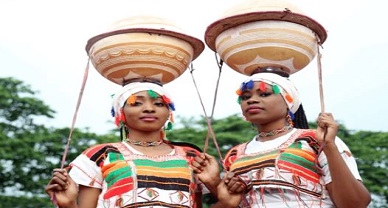Beyond the Big Screen: The Legal Odyssey of Film Titles in India
Introduction
The year 2023 was a high for Indian cinema- with the love of the country for the big screen soaring high with box office numbers. The appreciation and experimentation of OTT content have shown that India Cinema is back again. Bollywood’s resurgence has given us so many hits and so much content- however, the thing that helps an audience distinguish between so much content is their name. Film titles are essentially the bridge between the viewers and the film. The blog will address the legal protection of film titles and answer the big question of whether anyone can make another DDLJ.
The current stance on the Protection of Films Titles
So many contemporary films share their name with other films; the question arises, are the film titles protected in India?[1]
The Copyright Act protects certain types of works, which are included in Section 13. S. 13 (1) states that original literary, dramatic, musical, and artistic works as well as cinematograph films and sound recordings are protected by copyright.
Further the term “copyright” is defined in Section 14 of the Act as the exclusive right to perform any act relating to the aforementioned original works as described therein, or to grant permission to perform any such act.
The answer to the question has been given by the courts over the years in multiple cases. However, the noteworthy problem that arises is that – Most of the titles are common/ commonly used words or phrases used in everyday life, they cannot be classified an ‘original literary work’ per se; A simple interpretation of the Act indicates that a film’s title would not be protected as it would be challenging to establish whether a title was unique. The same explanation was given in “Krishika Lulla and Ors. vs. Shyam Vithalrao Devkatta and Ors”[2]
Why is it necessary to copyright titles
All this analysis is deemed fruitful and important when one understands the need to unravel this problem as soon as possible. By analysing the case of “Sholay Media and Entertainment v Parag M. Sanghavi”[3]. The facts were that the film title in contention was “Ram Gopal Verma Ki Sholay”, and as you guessed right, it was contended to be using the name of the renowed film of 1975 “Sholay”. Here, the defendants used the name “Sholay” to refer to their film as a remake of Sholay, implying that they intended to capitalise on the popularity of “Sholay”. It was noted that even if the mark “Sholay” was not registered, it had become a very valuable commodity and that its use violated the plaintiff’s exclusive moral rights under the copyright. As a result, court prohibited the defendants from utilising the word “Sholay” itself in the title of their movie because the movie has become a “cult classic.”
A similar view was reiterated in “Kanungo Media (P) Ltd. V RGV Film Factory”[4], the court rules that a movie title’s eligibility for trademark protection depends on its acquisition of secondary meanings and uniqueness.[5]
So is it fair to assume when a movie becomes famous or is well-recognised, it has automatically gained trademark protection of some sort, a technical problem arises – what is famous and what is not? By what measure is one supposed to decide this?
Decisions by various courts
Although, Sholay media and Kanungo Media case[6] took a stance of providing a hand of protection, Majority of the courts have supported the view of Krishika Lulla, to name a few :
In “Akashaditya Harishchandra Lama vs. Ashutosh Gowarikar and Ors.”[7], the plaintiff filed a lawsuit alleging copyright infringement and requested the issuance of an interim injunction to prevent the defendant’s film “Mohenjo Daro” from being released. The Bombay High Court dismissed the plaintiff’s claim that the title was copyrighted from the outset, citing a number of precedents to support its ruling that “it is settled law, and has been for a very long time, that there is no copyright in a title.”

Judge Colabawala stated, “…it is quite clear that a title of a work cannot be considered to be the subject-matter of copyright law because a title by itself is in the nature of a name of a work and is not complete by itself, without the work,” in the case ruling of “Zee Entertainment Enterprises Limited vs. Ameya Vinod Khopkar Entertainment and Ors”[8]. regarding the copyright for the film “De Dhakka.”
Nonetheless, this lawsuit gave birth to the concept of “sequel rights,” which allow for the preservation of movie names by injunction. The exclusive right to make a follow-up movie, which frequently stars the same actors and may include a significant chunk of the original movie’s narrative, is referred to as “sequel rights.”[9]
Furthermore, there have been instances, such as “Arbaaz Khan Production Private Limited v. North Star Entertainment Pvt. Ltd”[10]., when protection has been given but only under specific circumstances. The court stated that “Chulbul Pandey” could be covered under the act if the character from the movie is distinct and both the representation of that character.
Furthermore, A study of judgments like “Biswaroop Roy Choudhary vs. Karan Johar”[11] ; “Anil Kapoor Film Co Pvt Ltd v. Make My Day Entertainment & Anr” show that inorder for it to be passing off to stick, A title needs to have a unique identification that the general public is able to recognise.
Many film titles or names like Dhoom (ID: 1319835), Padman (ID: 3749859), 3 Idiots (ID: 1940729), and Singham (ID: 3672533), have been registered as a service mark under class 41, of the fourth schedule of the Trademark Rule, 2001.
Registration of films titles with associations
Another way to go for producers or production houses in to register their titles with Associations namely like, the Indian Motion Pictures Association and the Indian Film and Television Producers Council (IFTPC).[12] Once a title has been registered with one of these associations by an entity, the association will not allow another entity to register under the same name. These registrations aid in allocating precedence. This idea sort of gets the job done of a copyright. The problems arises that mere registration is not enough to grant legal protection, which is why the copyright becomes a necessity.
The case of “Anil Kapoor Film Co Pvt Ltd v. Make My Day Entertainment & Anr” is the best case study for this. the issue was whether release of the movie “Veere Ki Wedding” should be stopped because it was identical to another movie called “Veere Di Wedding,” which was registered with the IFTPC. The court sided with the defendeants when they said “The mere fact that there is another film in the making with the same title but a completely different star cast is not necessarily evidence of it being ‘calculated to deceive’ or of the Defendants’ ‘passing off’ their film as having been made by the Plaintiff”. When one ponders, the title literally translates to “my best-friends’ wedding”, which in itself is such a common phrase when one imagines movies titles, they entail uniqueness, or distinctive but In the end, the matter was resolved by the parties outside of court.
Conclusion
Film titles have more meaning in the vast realm of Indian cinema than just being names. This blog explored the complex legal complexities surrounding the protection of movie titles and questioned the fundamental purpose of copyright in a field where language and innovation coexist. The shifting nature of cinematic intellectual property is shown by examples such as “Sholay Media and Entertainment v Parag M. Sanghavi,” which highlight the need to protect titles notwithstanding the diversity of viewpoints presented in court rulings. The blog explored trademark registrations, legal frameworks, and the changing notion of sequel rights as Bollywood’s economy flourishes, illuminating the complex dance on screen between artistic freedom and legal protection.
Author:- Aastha Singh, in case of any queries please contact/write back to us at support@ipandlegalfilings.com or IP & Legal Filing.
[1] Bharat Vasani & Jasmine Latkar, What’s in a Name?, Cyril Amarchnad Corporate Blogs (Dec. 27, 2023) https://corporate.cyrilamarchandblogs.com/2021/01/whats-in-a-name-protection-of-movie-title-name/#more-4185
[2] Krishika Lulla v. Shyam Vithalrao Devkatta, (2016) 2 SCC 521
[3] Sholay Media and Entertainment v Parag M. Sanghavi. Sholay Media and Entertainment Pvt. Ltd. v. Parag Sanghavi, 2015 SCC OnLine Del 11644
[4] Kanungo Media (P) Ltd. V RGV Film Factory, 138 (2007) DLT 312
[5] Dishti Titus, Movie Titles – Protected under Indian Law?, Mondaq (Dec. 20, 2023) https://www.mondaq.com/india/trademark/1208372/movie-titles–protected-under-indian-law
[6] Supra note
[7] Akashaditya Harishchandra Lama v. Ashutosh Gowarikar, 2016 SCC OnLine Bom 5207
[8] Zee Entertainment Enterprises Ltd. v. Ameya Vinod Khopkar Entertainment, 2020 SCC OnLine Bom 11301
[9] Rakshana. MK, An analysis on Protection of film titles under Trademark Law, Surana & Surana (Dec. 20, 2023) https://suranaandsurana.com/2023/02/09/an-analysis-on-protection-of-film-titles-under-trademark-law/
[10] Arbaaz Khan Production (P) Ltd. v. Northstar Entertainment (P) Ltd., 2016 SCC OnLine Bom 1812
[11] Biswaroop Roy Choudhary v. Karan Johar, 2006 SCC OnLine Del 828
[12] Protection of Film Titles under Indian Law, NovoJuris (Dec. 20, 2023) https://www.novojuris.com/thought-leadership/protection-of-film-titles-under-indian-law.html

